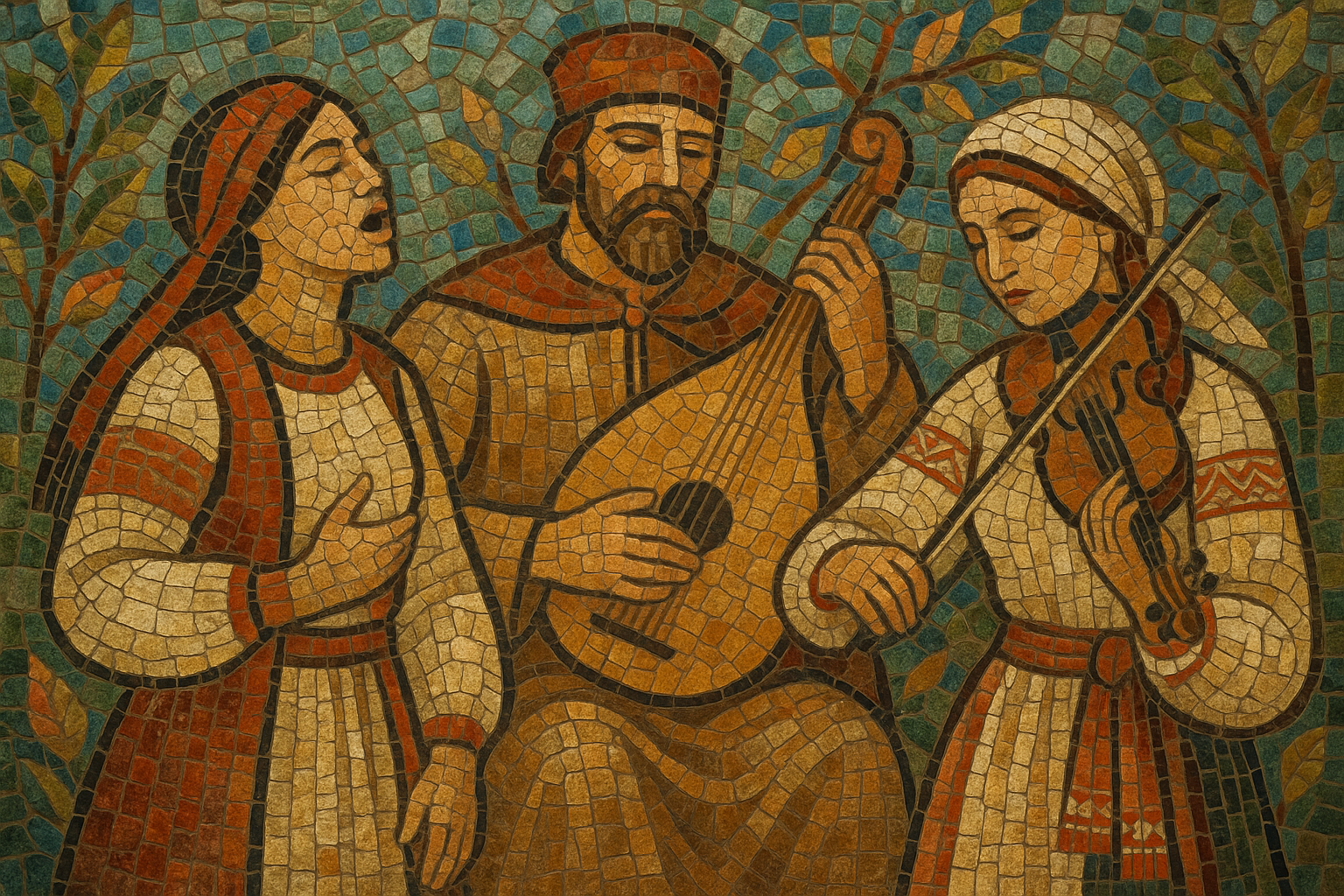Slavic folk music refers to the traditional vocal and instrumental practices of the Slavic peoples of Eastern, Central, and Southeastern Europe. It is a broad, interrelated family of styles that share modal melodies, rich vocal traditions, and a deep connection to seasonal rites, village life, and oral epic poetry.
Across regions, one encounters distinctive features: close-interval polyphony and “open-throated” timbres in the Balkans; epic songs (dumy, byliny) in the East; and dance-driven repertoires such as polkas, mazurkas, kolomyikas, and circle dances throughout the Slavic world. Characteristic instruments include the bandura and kobza (Ukraine), gusli and balalaika (Russia), gadulka (Bulgaria), tambura (South Slavs), various bagpipes (gajdy/dudy), sopilka/flutes, violins, and later the accordion.
Rhythmically, the music ranges from simple duple and triple meters to the asymmetrical “odd” meters common in the Balkans (7/8, 9/8, 11/16). Melodically and harmonically, it favors modal systems (Dorian, Aeolian, Mixolydian), drones, parallel motion, and ornamented lines. Lyrical themes encompass harvest and wedding rites, love and laments, historical narratives, and nature symbolism.
Slavic folk music crystalized from pre-Christian ritual song, work chants, and local epic storytelling that accompanied agrarian cycles, communal dances, and life‑cycle ceremonies. From the 900s onward, Christianization brought contact with Byzantine and later Orthodox and Catholic liturgical singing, which coexisted with—and sometimes reshaped—older vernacular repertoires. Oral transmission preserved melodic formulas, modal habits, and timbral ideals within villages over centuries.
From the 19th century onward, folklorists and composers (e.g., Moniuszko, Dvořák, Janáček) collected songs, harmonized folk materials, and integrated them into art music. In the 20th century, state ensembles (e.g., Mazowsze, Śląsk, LADO) systematized and staged regional repertoires, exporting polished choral and dance spectacles that popularized Slavic folk globally while also standardizing stylistic variants.
After mid‑20th‑century urbanization, folk revivals and world‑music movements brought renewed attention to village polyphony, ritual songs, and traditional instruments. Landmark recordings like Le Mystère des Voix Bulgares showcased Bulgarian female-choral sonorities. Contemporary artists fuse Slavic folk with jazz, rock, and electronic forms, while local communities continue to maintain ritual and seasonal traditions that anchor the music’s identity.


